Australia So Much to See

Burracoppin is a small town with little remaining. It was gazetted in 1891 and owes its existence to the Yilgarn gold rush. As the site of one of C.C. Hunt’s Wells it was used by those heading to Southern Cross.
It takes its name from Burracoppin
Rock, a nearby granite rock, the name of which was first recorded in 1864 as Burancooping Rock. It is an Aboriginal name said to mean
"near a big hill". It was also shown as Lansdowne Hill in 1836.
There is a roomy 24 hour rest area at Burracoppin Centenary Park, fee free, with toilets and potable water. Close to the highway so expect traffic noise.
The two storey hotel
building built in or around 1926, is the most substantial structure remaining within the Burracoppin town site, and this is no longer
operating as a hotel. The property is for sale, but appears to be currently used as a private residence. There are no
businesses remaining in the town.
Burracoppin was the main depot for the Rabbit Proof Fence, with gates and wells along the
fence being numbered from the town.
The threat of feral rabbits was so great to Western Australian agriculture that a physical
barrier was proposed. Explorer and surveyor Alfred Canning surveyed the line for the No 1 Rabbit Proof Fence. It was built in
two stages, with Burracoppin as the starting point. The first leg, started in 1901, ran from Burracoppin to the south coast in the
locality of Jerdacuttup, east of Hopetoun. The second leg, started three years later, ran to the north west coast at Cape Keraudren,
north of Port Hedland. However by 1902 rabbits had already been found west of the fence line. When completed in 1907, the fence was
1,827 kilometres long.
Two kilometres east of Burracoppin townsite, a rest area on the south side of the highway has information about
the Rabbit Proof Fence, which crossed at this location.
Two other vermin fences further west were completed in 1905 and
1907 giving a total fence length of 3,255 kilometres.
The fence was maintained and repaired by “Fence Runners”. Walking alongside
a camel drawn dray as they cleared to fenceline, they had plenty of time for creative thinking.
Arthur Upfield ran the fence
from Burracoppin to Camel Station, a distance of 260 kilometres. He created the functional Aboriginal detective Bony, the central
character in a number of his books, which spawned the television series “Bony”. In one book he describes Burracoppin as
it was in his day
“… he faced southward. Opposite was the Burracoppin Hotel, a structure of brick against the older building of weatherboard
which was now given up to bedrooms. To the left was a line of shops divided by vacant allotments. To the right, the three trim whitewashed
cottages, with the men’s quarters and trade shops beyond, owned by the State Rabbit Department. Behind Bony, beyond the railway, were
other houses, a motor garage, and the school, for the railway halved this town.”
In 1929 Arthur Upfield, as Australia's premier
crime writer, plotted a perfect murder for his novel The Sands of Windee. To his horror, one of his friends, stockman Snowy
Rowles, put the scheme into deadly effect even before the book was published. The result was Western Australia's most sensational
murder trial of the 1930s. Read the story of “A Perfect Murder”
Fence Runner Arthur Grundy was sitting alone
in his small hut one day in 1904 when he saw the sun reflected on a silver watch chain. He was reading the Children’s Corner of the
Western Mail at the time and was inspired to write to “Aunt Mary”, the journalist Muriel Chase, suggesting the establishment of a
society to be called “The Silver Chain”. The paper’s young readers would be invited to join the society, contributing money to be
used to help people in distress or perhaps support a sick child. This was the origin of Silver Chain, with its domiciliary nursing,
home help services, health centres and hospices, owes its origin to this reflective moment.
Heading east from Merredin on the Great Eastern Highway, we stopped for lunch at a rest area about ten kilometres from the town,
and found we were in a delightful patch of bush filled with flowering native shrubs.
The former town, Walgoolan, grew to support a siding on the east-west railway. Now the trains just speed past the derelict houses, shops, a deteriorating former town hall, overgrown grounds where there were once tennis courts, a cricket field, and a school which operated from 1930 to 1955.
The Aboriginal meaning of the name is said to be "place where short bushes grown".
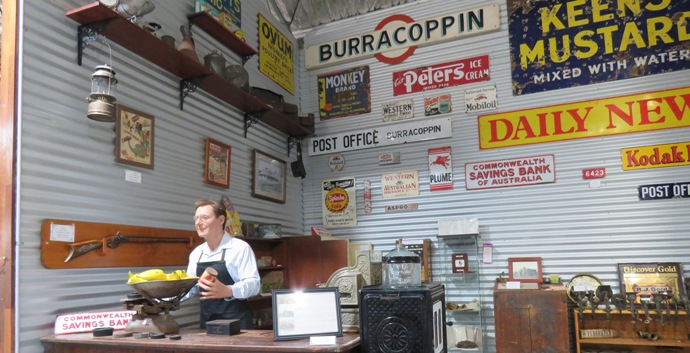
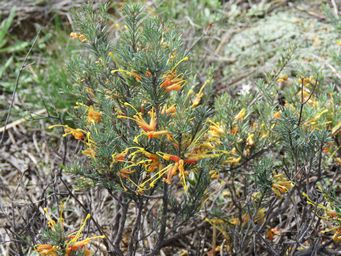
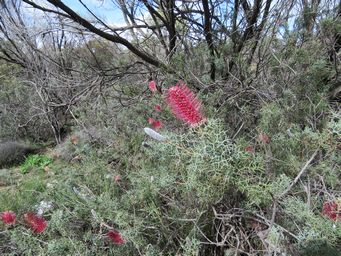
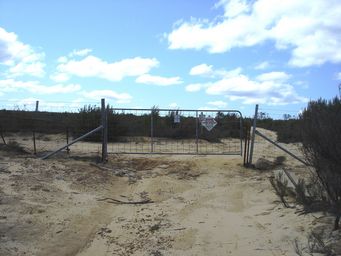
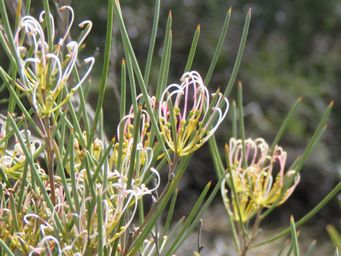
Many more wildflowers of Western Australia are featured on Wildflowers of Western Australia.